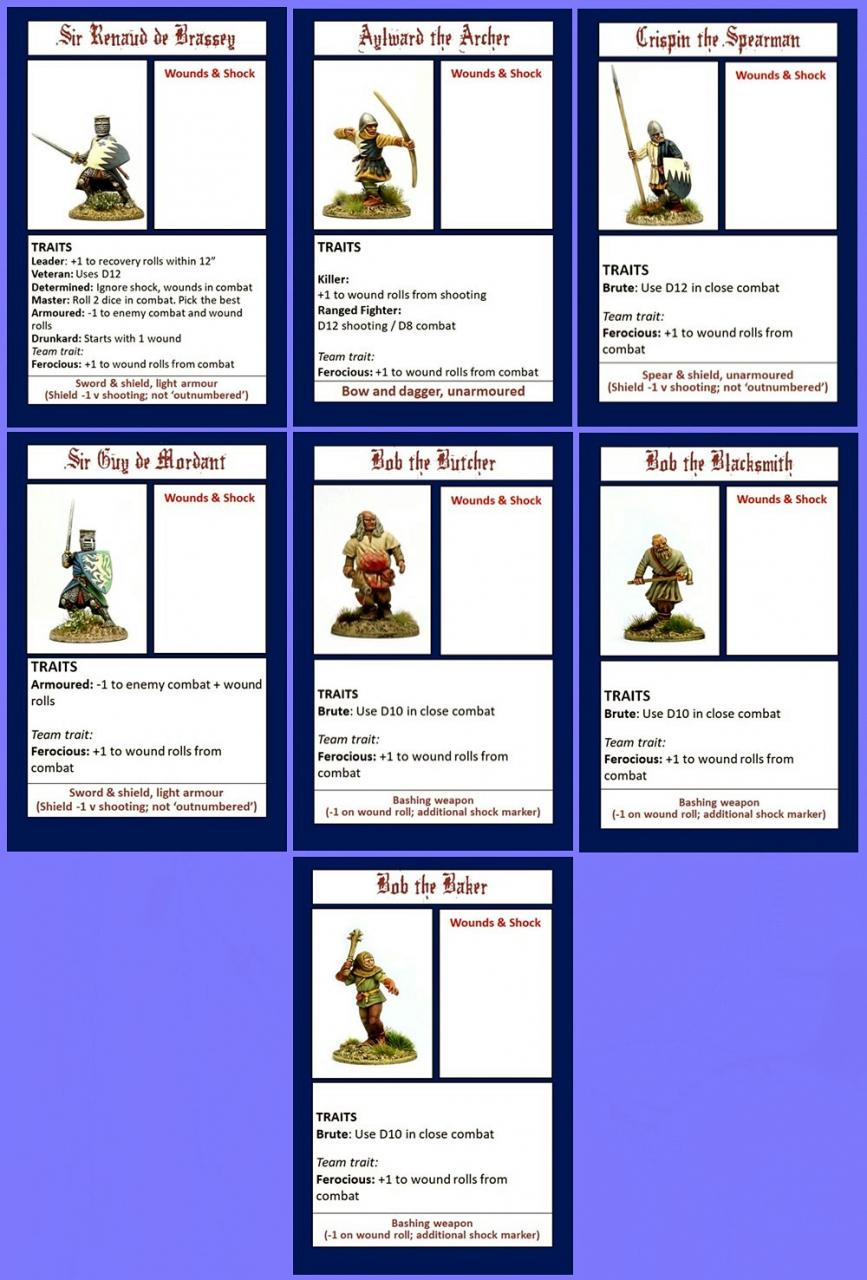Thanks everyone for the interest and comments

Thought it might be of additional interest to show you how a faction is set up - in this case my De Brassey contingent.
As you can see, the leader, Sir Renaud, has a cornucopia of additional traits (there are about 50 to choose from in the FFOL core rules).
He automatically gets the leader trait.
And as a leader he can then select three additional traits.
Plus if he takes a negative trait as well (drunkard, in this case) he can take an additional positive trait to offset it!
AND he gets the team trait, shared by all the characters in his faction.
This means Sir Renaud has no less than SEVEN traits, including the negative one. This does become quite difficult to keep track of. You have to remember to call on all these traits during the hurly-burly of the gameplay - which requires more than a little concentration

(The negative trait - drunkard - didn't do him any harm at all in the first game, because on the first turn he drew a card which allowed him to shake off his drunk 'wound' straightaway. In the second game however, he didn't get this opportunity, so was already carrying minuses to movement and combat when he was attacked by Sir Ronald De Barker and instantly killed - although to be fair, that was mainly down to a mahoosive differential on the dice roll).
At the other end of the scale, if you opt to take a trio of D8 'grunts' in place of one of your D10 'regulars', they get only one trait, plus the team trait. Obviously I opted to beef them up by giving them the 'brute' trait, which pushes them up a dice rank in hand to hand combat.
'Grunts' also die on their first and only wound, whereas regulars, specialists and leaders can take three wounds.
Aylward is the team specialist, so can take two traits, plus the team trait. Obviously, as a bowman, he has taken two of the available traits that enhance a shooter figure.
The big space on each card is to place wound, shock, reload and any other markers - I hate a confetti of tacky plastic counters littering the wargames table top. So all such things are recorded on the off-table card, rather than next to the in-play figure itself.
